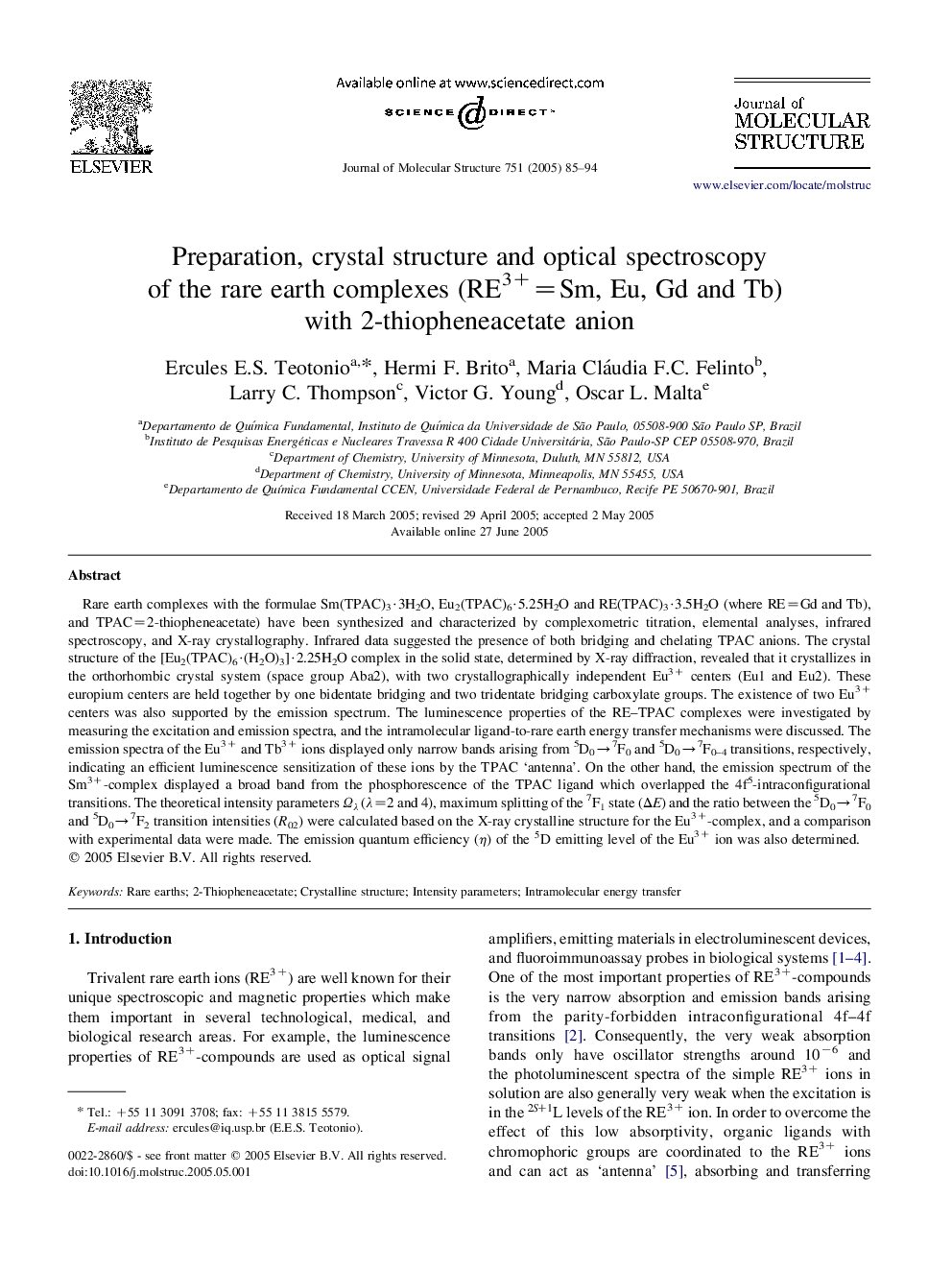| Article ID | Journal | Published Year | Pages | File Type |
|---|---|---|---|---|
| 9769925 | Journal of Molecular Structure | 2005 | 10 Pages |
Abstract
Rare earth complexes with the formulae Sm(TPAC)3·3H2O, Eu2(TPAC)6·5.25H2O and RE(TPAC)3·3.5H2O (where RE=Gd and Tb), and TPAC=2-thiopheneacetate) have been synthesized and characterized by complexometric titration, elemental analyses, infrared spectroscopy, and X-ray crystallography. Infrared data suggested the presence of both bridging and chelating TPAC anions. The crystal structure of the [Eu2(TPAC)6·(H2O)3]·2.25H2O complex in the solid state, determined by X-ray diffraction, revealed that it crystallizes in the orthorhombic crystal system (space group Aba2), with two crystallographically independent Eu3+ centers (Eu1 and Eu2). These europium centers are held together by one bidentate bridging and two tridentate bridging carboxylate groups. The existence of two Eu3+ centers was also supported by the emission spectrum. The luminescence properties of the RE-TPAC complexes were investigated by measuring the excitation and emission spectra, and the intramolecular ligand-to-rare earth energy transfer mechanisms were discussed. The emission spectra of the Eu3+ and Tb3+ ions displayed only narrow bands arising from 5D0â7F0 and 5D0â7F0-4 transitions, respectively, indicating an efficient luminescence sensitization of these ions by the TPAC 'antenna'. On the other hand, the emission spectrum of the Sm3+-complex displayed a broad band from the phosphorescence of the TPAC ligand which overlapped the 4f5-intraconfigurational transitions. The theoretical intensity parameters Ωλ (λ=2 and 4), maximum splitting of the 7F1 state (ÎE) and the ratio between the 5D0â7F0 and 5D0â7F2 transition intensities (R02) were calculated based on the X-ray crystalline structure for the Eu3+-complex, and a comparison with experimental data were made. The emission quantum efficiency (η) of the D5 emitting level of the Eu3+ ion was also determined.
Related Topics
Physical Sciences and Engineering
Chemistry
Organic Chemistry
Authors
Ercules E.S. Teotonio, Hermi F. Brito, Maria Cláudia F.C. Felinto, Larry C. Thompson, Victor G. Young, Oscar L. Malta,
